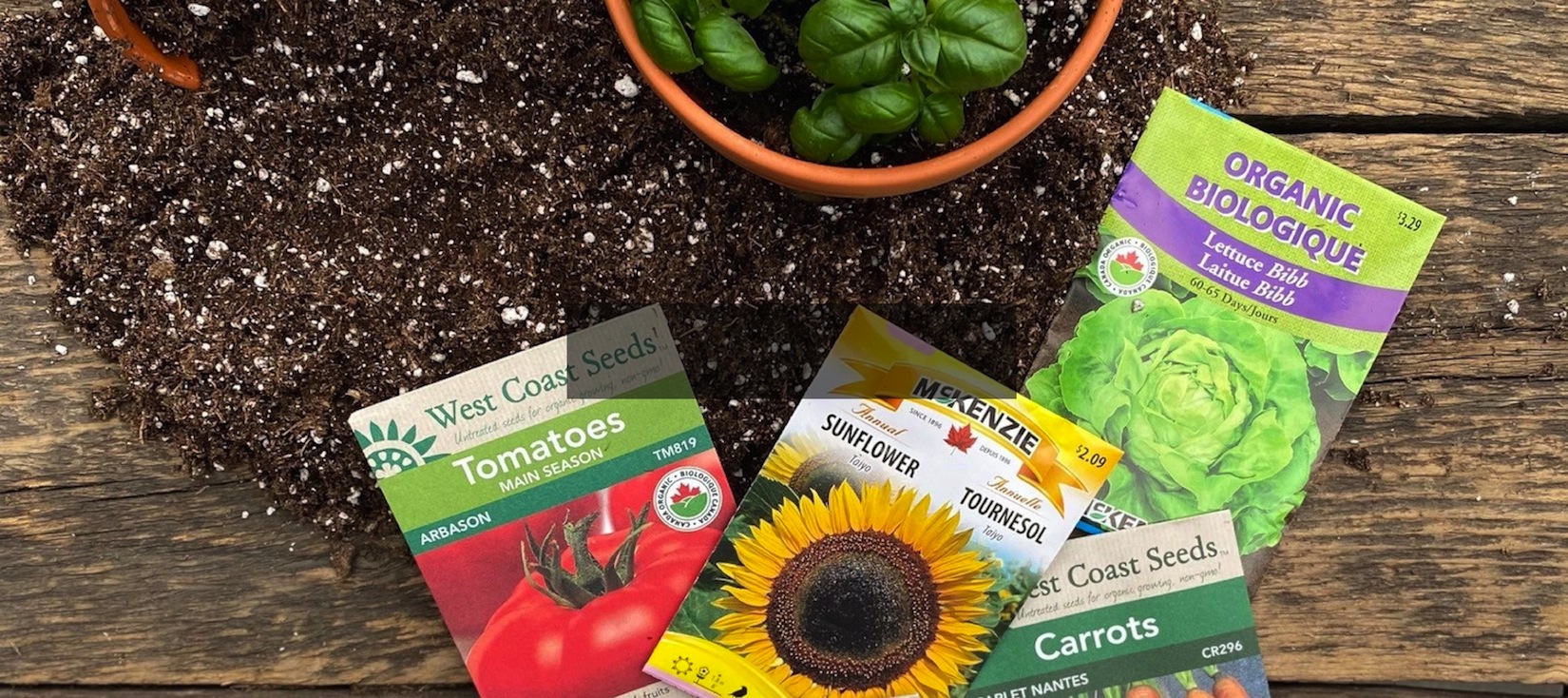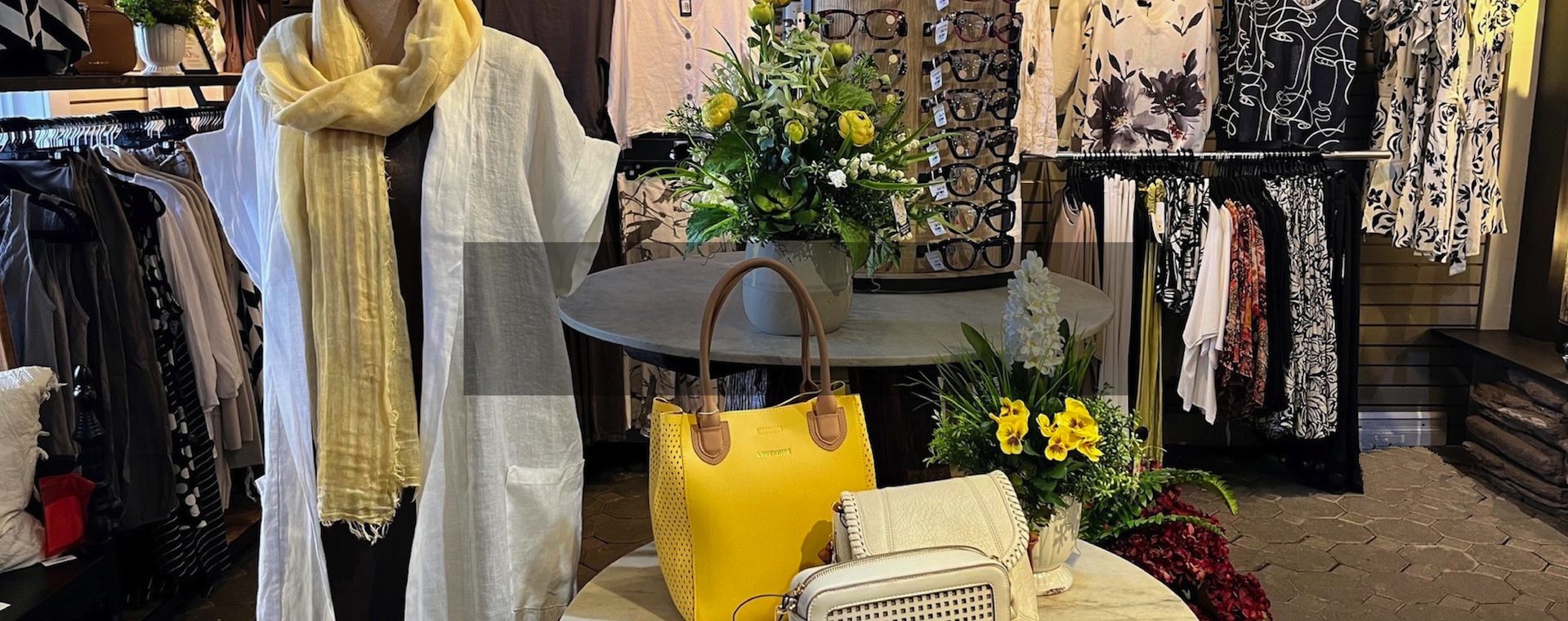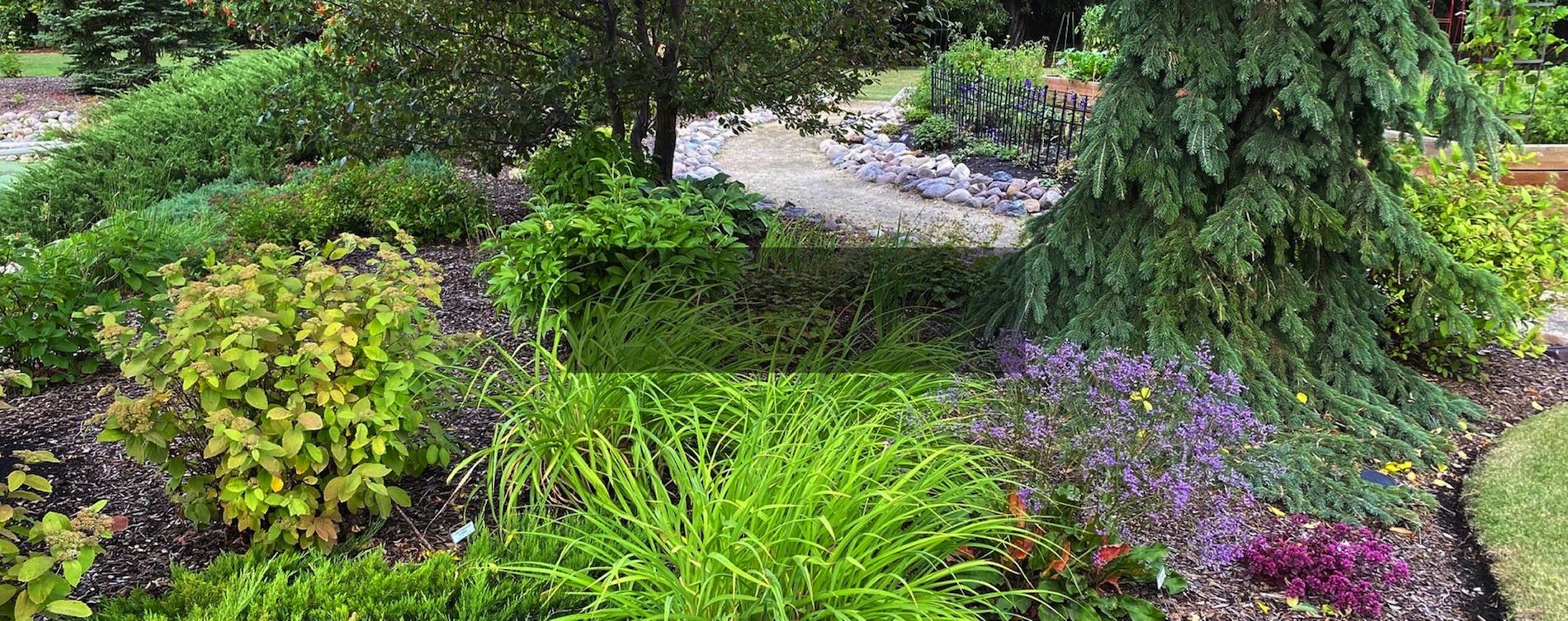Trendy Tropicals
January 27, 2019
The Trendiest Houseplants on Social Media
It’s taken a decade or so, but the horticulture world has finally found itself in the centre of the social media craze. In 2019, our industry is largely being driven by what is trending on social media sites like Instagram and Facebook, where houseplant lovers can get ideas for new “plant children” to bring home and grace their living spaces. In the winter, visiting your favourite plant trendsetter’s page to get inspiration, and then visiting the greenhouse to pick up something green to bring home is a very effective way to get over the winter blues.
As with most things, each year there is a new set of plants that are getting more attention in the social media spotlight than others. We have compiled a list of the houseplants that seem to be getting the most favour in 2019, as well as a few suggestions for something a little different to try out.

Cacti - Various spp.
Cacti and other succulents (see below) have seen a huge resurgence in popularity recently. The cactus family is the largest family of succulents and contains some of the most wonderful and beautiful flowering plants in the world. All cacti flower (contrary to popular belief) and many have stunningly beautiful flowers, although they only last for a day or two. While most leafy succulents are Old World plants, cacti are almost exclusively New World species. There are both desert cacti (such as the saguaro) and jungle cacti (such as the Christmas cactus).
Desert cacti should be grown in at least a few hours of direct sun per day; lower light results in leggy growth, loss of colour and lack of blooming
Water desert cacti regularly during the spring and summer, allowing the summer to partially dry between watering. Keeping plants dry during this time will retard growth. They should be kept almost completely dry in winter to avoid rot, with only the occasional light sprinkle if they shrivel
Jungle cacti like more diffuse light (still bright but indirect) and more consistent moisture (but never wet or soggy)
All cacti flower best if provided with a drier and cooler winter rest

Calathea - Calathea spp.
Hailing from the rainforests of South America, these showy foliage plants are easily grown. Having a compact growth habit, they are great for smaller spaces as well.
The most popular species currently are C. lancifolia, with narrow, rippled, spotted leaves, and C. ornata, with rounded, almost black leaves lined with neon-pink
Best in bright, indirect light, these will tolerate lower light
Keep the soil evenly moist, but not soggy
Low humidity and dry soil will cause leaves, especially the edges, to brown

Fiddleleaf Fig - Ficus Iyrata
Having led the charge of the social media houseplant crazy several years ago, this is still amongst the most popular houseplants. Native to the rainforests of Africa, these are very interesting parasitic plants, whose seeds germinate in the crown of an existing tree, before sending roots toward the ground that gradually envelop the host tree and strangle it. As houseplants they are popular for their lyre-shaped, glossy leaves which lend themselves well to modern home décor.
Grow in bright, indirect light. Low light will cause leaf drop and weak, leggy growth
Allow the soil to partially dry between watering. Overwatering will cause yellowing, browning, leaf drop and rot
Keep out of drafts. These plants are very sensitive to temperature swings and will drop leaves aggressively if exposed to drafty conditions
Keep away from heat registers and other sources of hot, dry air. Low humidity causes the edges and tips of leaves to brown

Ginseng Fig Bonsai - Ficus retusa
This species is the most popular for indoor bonsai, for good reason. Being a tropical plant, they don’t have special dormancy requirements and their needs are easily met. With their interestingly shaped trunks and branches, they look fantastic too! Because these are grown from a graft on an established cutting, they are much easier, faster and cheaper to produce than most other bonsai specimens, which will be very expensive for finished plants, being decades old.
Grow in bright, indirect light. Low light will cause leaf drop and weak, leggy growth
Allow the soil to partially dry between watering. Overwatering will cause yellowing, browning, leaf drop and rot
Keep out of drafts. These plants are very sensitive to temperature swings and will drop leaves aggressively if exposed to drafty conditions
Keep away from heat registers and other sources of hot, dry air. Low humidity causes the edges and tips of leaves to brown

Hoya - Hoya sopp.
Found in the rainforests of tropical Asia, there are many species of these succulent vines, and there is seemingly no end to the appetite that houseplant fans have for them! The species Hoya carnosa, the old-fashioned wax plant, is the only species widely available in great numbers, with more hopefully becoming more available in the coming months and years. These are popular not just for their interesting foliage (which can be very attractively patterned and shaped), but also for their beautiful umbels of scented flowers, which only appear on mature, well-grown plants. After many years of growth, many of these are capable of reaching 8 feet or more in length untrimmed as a houseplant. In nature, most grow as epiphytes, with aerial roots to absorb moisture from the air, and will ascend trees high into the forest canopy.
Grow in as much light as you can provide, short of burning the leaves. Lower light results in painfully slow growth and lack of blooming
Allow plants to dry between watering; overwatering causes rot and leaf drop
Fertilize during active growth, providing a rest during winter to encourage blooming
Keep plants rootbound to encourage vigorous growth and regular flowering
“Heart hoya” (Hoya kerrii) leaf cuttings will take many months to start growing, if they ever do. It is best to start with a rooted stem cutting to get a nice vine

Swiss Cheese Plant - Monstera adansonii
Not to be confused with the next plant on the list, to which this is closely related, this plant is in very high demand but unfortunately, very short supply. Be sure to snap one up the first time you see it, as it may be months or years before you see it again! These plants are so-named for the leaves they have, which are covered all over their surface with holes. Like its larger relative, it is believed this is an adaptation to protect the foliage from damage from strong wind and heavy rain. These plants are epiphytes, producing aerial roots to absorb moisture from the air, and vining growth that ascends trees in the wild. They make a great specimen from hanging baskets or for training up a pole.
Grow in bright, indirect light. Plants will get leggy when grown in low light
Allow the soil to partially dry between watering. Overwatering will cause “weeping” (the leaves produce water droplets along the edges), yellowing, browning, and rot
Fertilize regularly, especially while actively growing; excessive yellowing of inner leaves indicates lack of nutrients

Monstera - Monstera deliciosa
Also known as splitleaf philodendron, this is an old-fashioned houseplant that is seeing a huge resurgence in popularity. Being an aroid, it is related to other familiar houseplants such as pothos, peace lily and anthurium. Hailing from the rainforests of Central and South America, it is coveted for its very large, glossy green leaves, the edges of which are split almost right into the centre. It is believed this is an adaptation to protect the leaves from damage from strong wind and rain. These plants are epiphytes, producing aerial roots to absorb moisture from the air and growing up trees, up to a height of over 60 feet in the wild. Grown indoors, plants will get large but not usually more than 4-5 feet tall in old plants. The name deliciosa comes from the edible fruit, although other parts of the plant are mildly poisonous (as with all aroids).
Grow in bright, indirect light. Plants will get leggy when grown in low light
Allow the soil to partially dry between watering. Overwatering will cause “weeping” (the leaves produce water droplets along the edges), yellowing, browning, and rot
Fertilize regularly, especially while actively growing; excessive yellowing of inner leaves indicates lack of nutrients

Watermelon Peperomia - Peperomia argyreia
This plant was little-known until it started appearing on social media recently. The rounded, succulent leaves have gorgeous colour patterning, silver-green with deep green stripes, just like a watermelon. In the wild, these are found in the rainforests of South America. It’s an easy growing and compact plant that is sure to bring cheer to any indoor space. We think peperomias as a whole will make a big splash in 2019, with more varieties entering the limelight as the year goes on.
Grow in bright, indirect light; low light results in leggy growth
Allow the soil to partially dry between watering; overwatering causes leaf yellowing and rot

Chinese Money Plant - Pilea peperomioides
This was the most-wanted plant of 2017 and 2018, and its popularity endures as supply has finally started to reach demand. Also called pancake plant, these are so-named for their almost perfectly round, succulent leaves. The plants are originally from southern China, where they grow on rocks in forested areas. Very charming indeed, as a bonus these are very easy to grow and are stoloniferous, readily producing offshoots that can be separated and grown into new plants.
Grow in bright, indirect light; low light results in leggy growth
Allow the soil to partially dry between watering; overwatering causes leaf yellowing and rot

Snake Plant - Sansevieria trifasciata
Another classic that is seeing a huge revival, this is definitely one of the most-wanted houseplants right now. Sometimes called “mother-in-law’s tongue”, the classic version has tall, erect, succulent leaves with snakeskin patterning. There is also a “bird’s nest” type, great for smaller spaces, which produces a much shorter rosette. These are becoming available with increasingly stunning colour patterns, and they are hands-down one of the easiest tropicals to grow. Native to Africa, it is also considered one of the best plants for air purification.
These tolerate all sorts of light conditions, from low light to almost full sun (although complete darkness will not suffice!)
Keep on the dry side; these will rot under overly moist conditions and can stay dry for a long time before showing stress

Silver Pothos - Scindapsus pictus
Best grown in bright, indirect light, although these will tolerate lower light levels
Allow the soil to partially dry between watering; overwatering causes leaf yellowing, browning and rot. These are quite forgiving of underwatering, however
The most popular varieties are ‘Silver Splash’ and ‘Silver Satin’. A selection of another species, Epipremnum pinnatum ‘Cebu Blue’, is in high demand but is very hard to find

Succulents - Various spp.
Perhaps the most trendy group of plants right now, these come in all sorts of shapes, sizes and colours.
The most popular types include Echeveria, Haworthia, Aloe, string of pearls/dolphins/bananas/tears and fish hooks (various Senecio spp.), string of hearts (Ceropegia woodii), jade plant (Crassula ovata), and donkey tail (Sedum morganianum)
Grow succulents in bright light with at least a few hours of direct sun, or under grow lights; low light results in leggy growth and loss of foliage colour
Water regularly (but do not allow soil to become soggy) during periods of active growth in spring and summer; water more sparingly in the winter, keeping on the dry side
Plants do best in smaller containers
Bob and Joe's Spotlight
Below are some plants not necessarily trending right now, but which 630 CHED Garden Show hosts Bob and Joe believe are worthy of more attention:

Chinese Evergreen - Aglaonema spp.
These aroids are found growing on the forest floor in the tropical forests of Asia. There are many varieties sporting incredibly vibrant patterned foliage, and they are very easy to grow.
Some of the best varieties include ‘Anyamanee’, ‘Golden Flourite’, ‘Lumina’, ‘Moonstone’, ‘Siam’, ‘Silver Bay’, ‘Pink Dalmatian’ and ‘White Dalmatian’
Do well in lower light levels
Allow to dry partially between watering; overwatering causes yellowing of leaves and rot
Best grown in smaller containers

Anthurium - Anthurium spp.
Also called flamingo lily, these aroids are close relatives of the peace lily. If you want long-lasting colour in your home, look no further than these easily grown tropicals. They can bloom for months on end, and are available in several different colours. A brand-new variety of note is ‘Livium’, whose flowers are an unusual reddish-pink with white stripes.
Grow in bright, indirect light; lower light results in leggy growth and lack of blooming
Allow the soil to partially dry between watering; overwatering results in yellowing and browning of leaves, and rot

Asciepiads - Various spp.
This is a group of succulents belonging to the subfamily Asclepiadoideae (milkweeds) in the family Apocynaceae (dogbane family). Some of their relatives include milkweed, hoya, oleander, desert rose, and mandevilla. These have absolutely incredible flowers produced on cactus-like stems, and consist chiefly of Huernia spp., Stapelia spp. and Orbea spp.
Grow in bright light with at least a few hours of direct sun; lower light results in leggy growth, loss of colour and lack of blooming
Water regularly during active growth in spring and summer, allowing to almost dry out between watering. In winter, keep mostly dry, watering only when plants start to shrivel. These are very sensitive to rot in the winter

Kaffir Lily - Clivia miniata
This African plant is closely related to amaryllis but grows from a tuberous rootstock instead of a bulb. It produces evergreen fans of deep green leaves and clusters of beautiful coral-orange, lily-like flowers. It is one of the easiest plants to grow, but a bit trickier to flower.
Grow in as bright light as possible, short of burning the leaves, for best blooming
During active growth in spring and summer, keep the soil evenly moist (not soggy) and fertilize regularly
Keep on the dry side in winter, withhold fertilizer and provide a cool rest period to induce blooming in late winter/early spring
Plants also bloom best when rootbound

Dieffenbachia - Dieffenbachia spp.
An aroid found in the rainforests of South America, these are sometimes called “dumbcane” because of the cognitive and psychological effects that chewing on a leaf can have on a person. Severe poisoning symptoms only occur when relatively large quantities are ingested. Once a popular houseplant for their attractive foliage and ease of growth, these are deserving of the same resurrection some of their peers are enjoying. Some unusually beautiful varieties are now available.
Our favourite selections include ‘Camouflage’, ‘Nicole’, ‘Panther’, ‘Star Bright’, ‘Sterling’ and ‘Tropic Marianne’
Grow in bright, indirect light to avoid leggy growth
Allow the soil to dry partially between watering; overwatering results in leaf yellowing, browning and rot
Leaf edges can brown in very low humidity

Went Indian Jasmine - Ixora spp.
These shrubs, found in tropical Asia, resemble hydrangea or jasmine and are also sometimes called jungle geranium. They produce clusters of brilliantly coloured flowers and can bloom for long periods of time.
Grow in bright light with a few hours of direct sun
Keep the soil evenly moist but never soggy, and slightly drier in winter
Plants tend to have high demands for fertilizer and prefer acidic soil, so 30-10-10 and iron chelate is recommended

Mesembryanthemoids or Mimicry Plants – Various spp.
Called “mesembs” for short, this is a group of succulents containing living stones and other related plants. They tend to exhibit mimicry of rocks to protect them from foragers, and produce brightly coloured, daisy-like flowers.
Some of the best types to grow include living stones (Lithops and Aloinopsis spp.), split rock (Pleiospilos nellii), ostrich toes (Gibbaeum spp.), and baby toes (Fenestraria rhopalophylla)
Grow in bright light with at least a few hours of direct sun; lower light results in leggy growth, loss of colour and lack of blooming
These should be watered only while new growth is developing and the old growth has been shed; keep dry at other times, watering or spraying lightly only when plants start to shrivel

'Platinum Mist' Peace Lily - Spathiphyllum spp.
This newer variety of a classic favourite is a bit harder to find but is worth seeking out. Its leaves are a beautiful pewter-silver colour, delicately veined green. No other peace lily has foliage like this. It is just as easy to grow as any other variety and produces the same fragrant white hooded flowers.
Grow in bright, indirect light; tolerates lower light
Keep the soil evenly moist; plants wilt dramatically if they get too dry and this will quickly lead to browning leaf tips and edges
Leaf edges will also brown from low humidity; keep away from heat registers and other sources of hot, dry air

Calico Hearts

Crinkle Leaf Plant

Plover Eggs Plant
Andromischus spp. - Various Common Names
These succulent relatives of Sedum and Crassula are just starting to gain recognition as mainstream houseplants, and they are truly fabulous! Three species are very much worth checking out:
Calico hearts (A. maculatus) produces short, clumping stems of flattened, heart-shaped leaves that are covered in purple spots. The small, pale pink flowers are somewhat nondescript.
Crinkle leaf plant (A. cristatus) produces a rosette of very interesting plump, grey-green leaves with a slightly rough texture and wavy edges. It also produces small white flowers.
Plover eggs plant (A. cooperi) has short clumps of somewhat egg-shaped leaves, covered in purple spots, as well as small pale pink flowers.
These should all be grown in bright light with a few hours of direct sun. Water when the soil is dry, with slightly reduced watering in winter.





